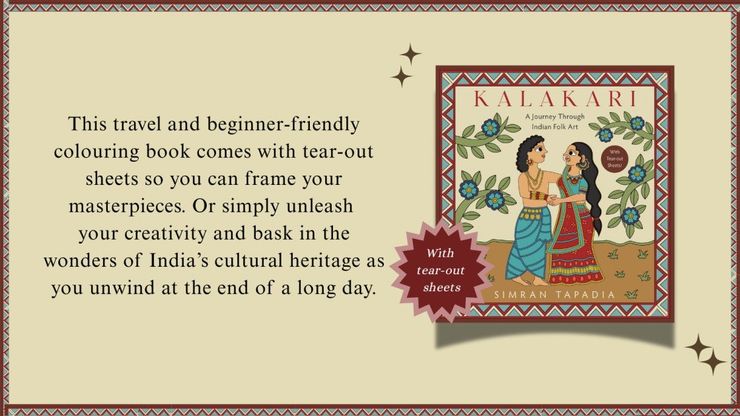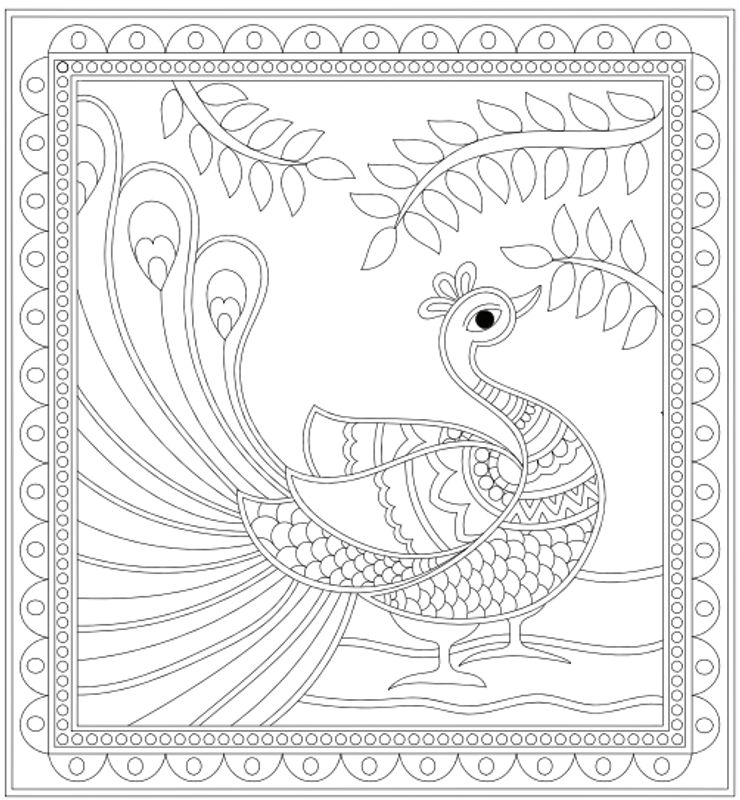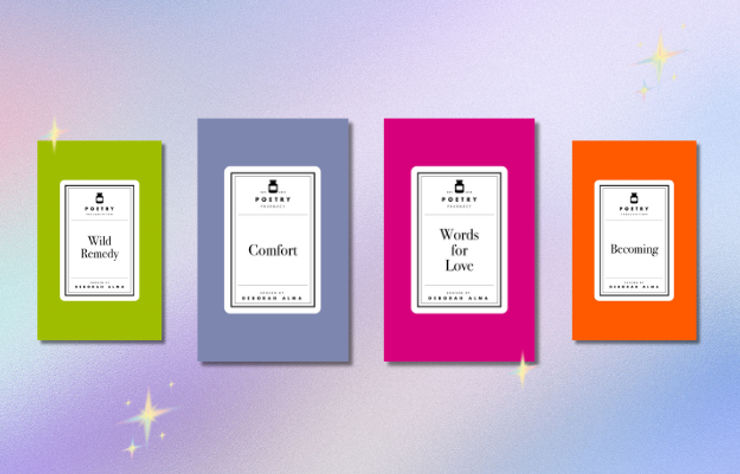A Journey Through Indian Folk Art 🎨🖌️
Kalakari is a celebration of India’s rich folk tradition – of the icons and shapes, artisans and histories that make each artform uniquely beautiful.

Madhubani
Madhubani, or Mithila painting, is a traditional art form that originated in the Mithila region of Bihar, India, dating as far back as the eighth century BCE. The themes usually captured in this art form include love, fertility, romance, religion and mythology. According to some legends, King Janak of Mithila commissioned paintings to document his daughter Sita’s wedding to Prince Ram.
Women are the primary custodians of this art and pass it down through the generations. Girls begin learning the craft at a young age, often painting these scenes on prominent walls in sacred spaces, such as prayer rooms, or to mark special occasions, such as festivals or weddings – even using them to decorate the bedrooms of newlyweds. These artworks are typically temporary and usually erased after the occasion, which makes it challenging to preserve them.
Madhubani paintings often depict Hindu deities, wedding scenes and sacred symbols such as the sun and moon. Common motifs of love include Radha–Krishna and peacock–peahen pairs. The art is characterized by geometric patterns and the use of vibrant shades of yellow, orange, blue and black, with all pigments being sourced from natural materials. Simple tools like matchsticks, twigs and nib pens are used to create intricate patterns and fill in the colours.
Today, Madhubani art has gained international acclaim �– a collection of over 1,000 paintings is currently on display at the Mithila Museum in Tokamachi, Japan. Prominent artists in this tradition include Sita Devi, Bauva Devi, Ganga Devi, Mahasundari Devi and Dodavari Dutta.



